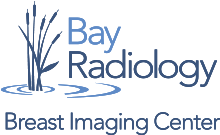
Services
2D and 3D screening and diagnostic mammography
Our imaging is all digital and we offer state of the art low dose 3D mammography (aka tomosynthesis with C-view).
- A screening mammogram is for a patient who is having no breast problems (no palpable lump or other concerns). It typically is composed of 4 images, 2 of each breast (4 images of each breast in women with breast implants.) Screening mammograms with tomosynthesis (aka 3D mammograms) have been shown to increase detection of invasive breast cancer (the ones that matter most) by 40%, and decrease false alarms by 15-40%.
- A diagnostic mammogram is for patients who do not qualify for routine screening mammograms. This includes patients who have new symptoms (e.g., a palpable lump), or who are being followed more closely for one of several reasons. It may include the same views as a screening mammogram but can also include special views such as magnified views or spot views with tomography (3D).
- Learn more: https://www.radiologyinfo.org/en/info/mammo
Contrast-enhanced mammography (CEM)
Contrast-enhanced mammography (CEM) is a new breast imaging technique that combines a traditional mammogram with iodinated contrast dye (the same dye that is used for CT scans). The dye collects in abnormal blood vessels, making it possible to see breast cancers and other lesions that would otherwise not be visible on the mammogram.
- Learn more here
Physician-performed breast ultrasound
Ultrasound uses sounds waves to obtain images of the breast so there is no ionizing radiation. It is a supplement to, not a replacement for, a mammogram. All of our breast ultrasound is performed by our fellowship-trained physicians, not by technologists.
- Screening breast ultrasound is an exam of the entirety of both breasts. It may be performed in some asymptomatic women, for example in those with dense breasts and elevated risk of breast cancer but not high enough risk to qualify for breast MRI.
- A diagnostic breast ultrasound exam is designed to address a specific question (e.g., a new or questionable finding on the mammogram, or a palpable lump). It is often targeted, focusing on one or several areas of one or both breasts.
- Learn more: https://www.radiologyinfo.org/en/info/breastus
Ultrasound-guided cyst aspiration and fine needle aspiration
- Ultrasound imaging is used to guide the procedure. Under local anesthesia, a small needle is used to collect fluid or cells from the breast.
- Learn more: https://www.radiologyinfo.org/en/info/breastbius
Ultrasound-guided core needle biopsy
- Ultrasound imaging is used to guide sampling of a lesion. First the local area is cleaned and local anesthesia is administered until the area is completely numb. Then under ultrasound guidance, a core biopsy device is used to collect small samples of tissue from the area of interest. A biopsy marker is typically placed at the biopsy site at the conclusion of the procedure.
- Learn more: https://www.radiologyinfo.org/en/info/breastbius
Stereotactic core needle biopsy
- 2D mammographic images are used to guide sampling of a lesion. First the local area is cleaned and local anesthesia is administered until the area is completely numb. Then under stereotactic guidance, a core biopsy device is used to collect small samples of tissue from the area of interest. Sometimes the entire visible lesion may be removed during sampling; therefore, a biopsy marker is typically placed at the biopsy site at the conclusion of the procedure to mark the location.
- Learn more: https://www.radiologyinfo.org/en/info/breastbixr
Tomosynthesis-guided core needle biopsy
- For lesions that are best or only seen with tomosynthesis (3D mammogram). First the local area is cleaned and local anesthesia is administered until the area is completely numb. Then under 3D guidance, a vacuum-assisted core biopsy device is used to collect small samples of tissue from the area of interest. Sometimes the entire visible lesion may be removed during sampling; therefore, a biopsy marker is typically placed at the biopsy site at the conclusion of the procedure to mark the location.
- Learn more: https://www.youtube.com/watch?v=gb52U5wq7Bo
CEM-guided stereotactic biopsy
- For lesions that are best or only seen with contrast-enhanced mammography (CEM). An IV is placed and CT contrast dye is administered. The local area is cleaned and local anesthesia is administered until the area is completely numb. Then under stereotactic guidance, a vacuum-assisted core biopsy device is used to collect small samples of tissue from the area of interest. Sometimes the entire visible lesion may be removed during sampling; therefore, a biopsy marker is typically placed at the biopsy site at the conclusion of the procedure to mark the location.


